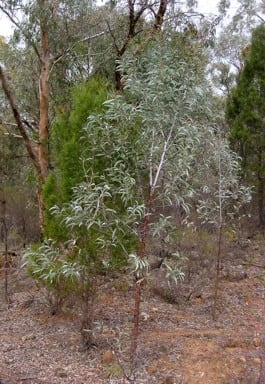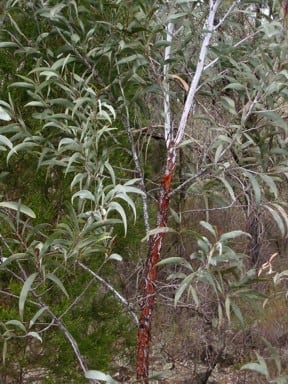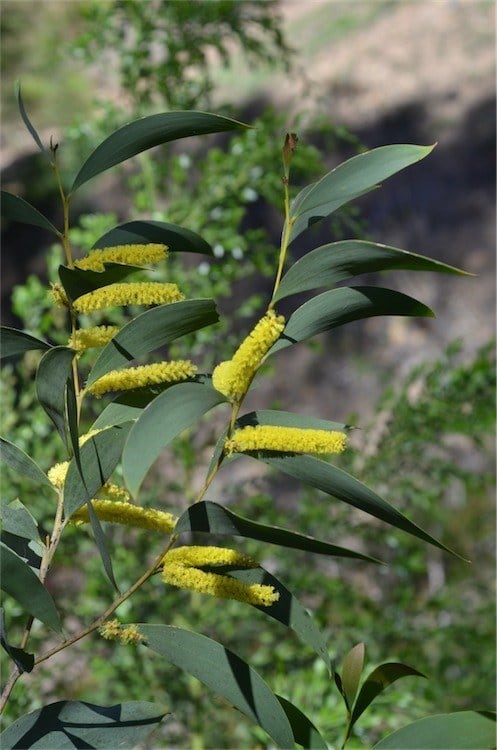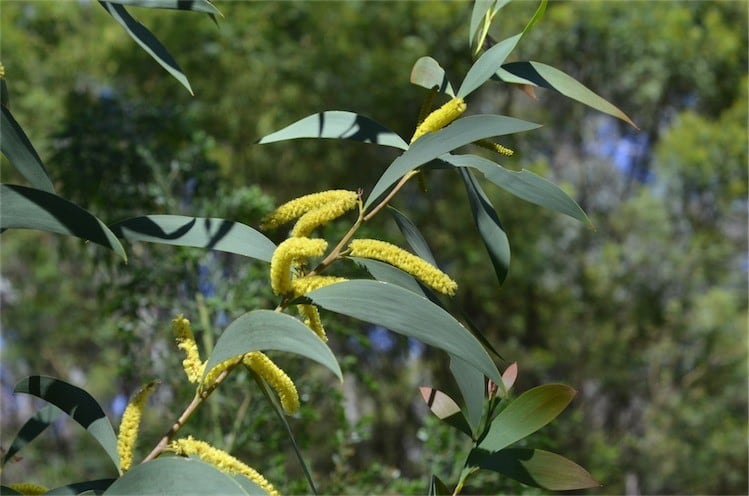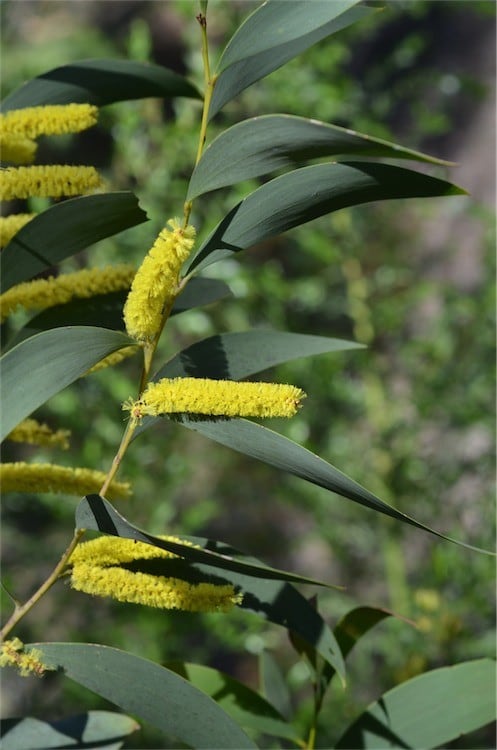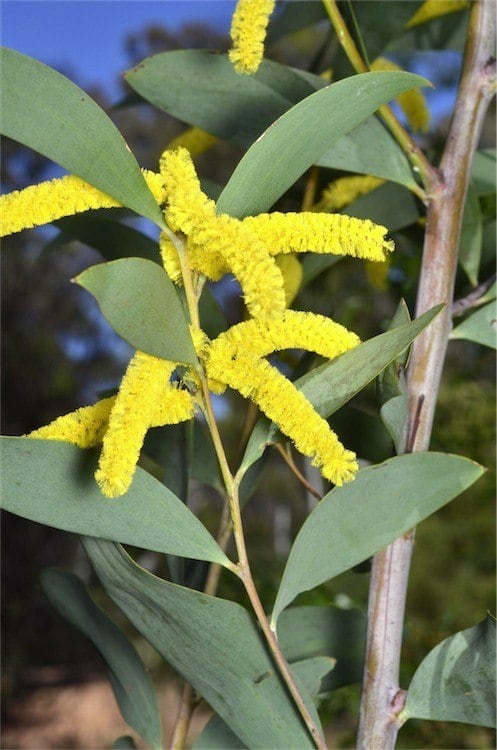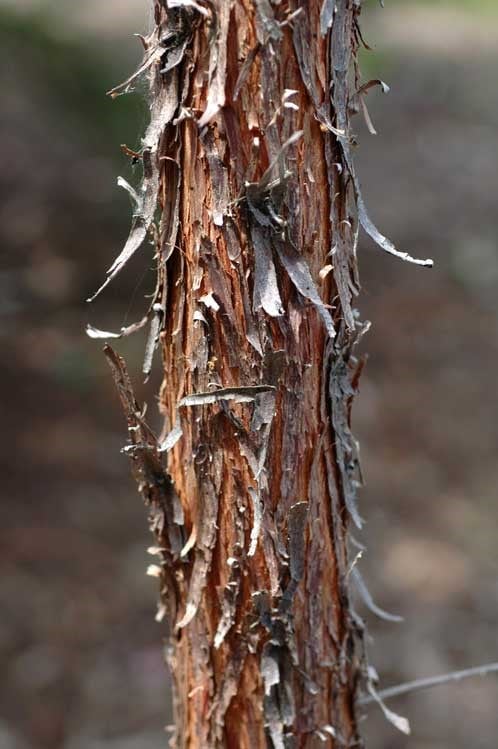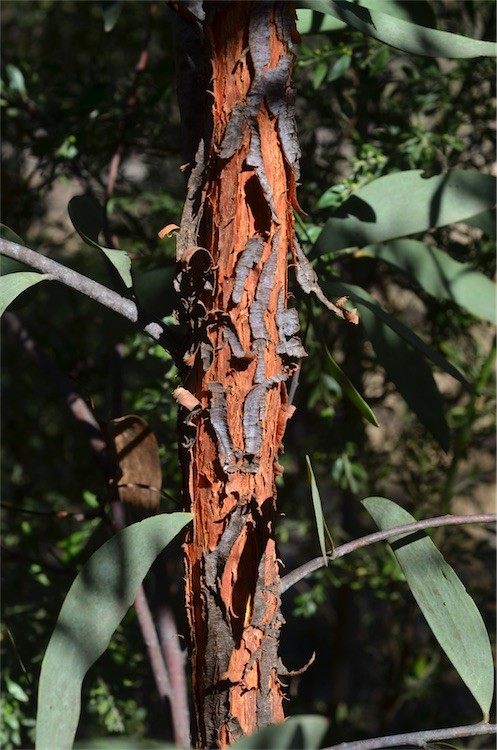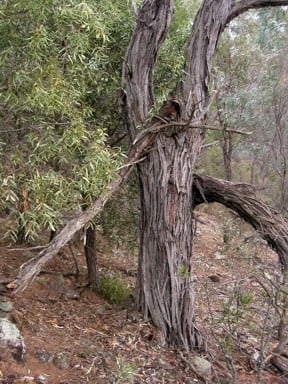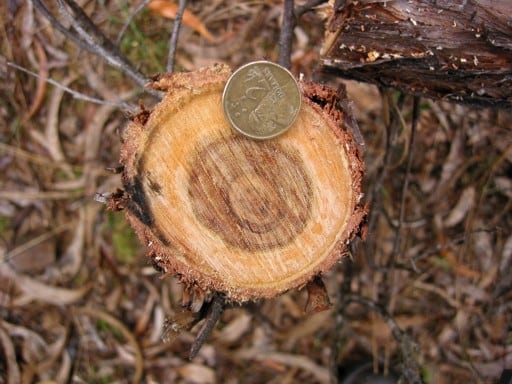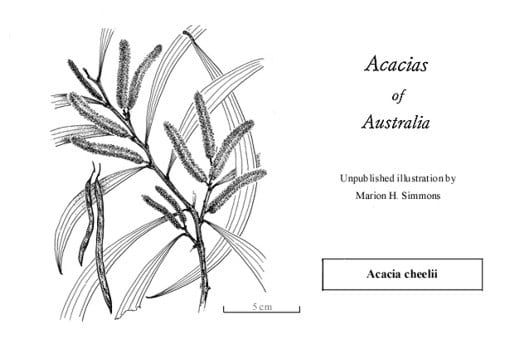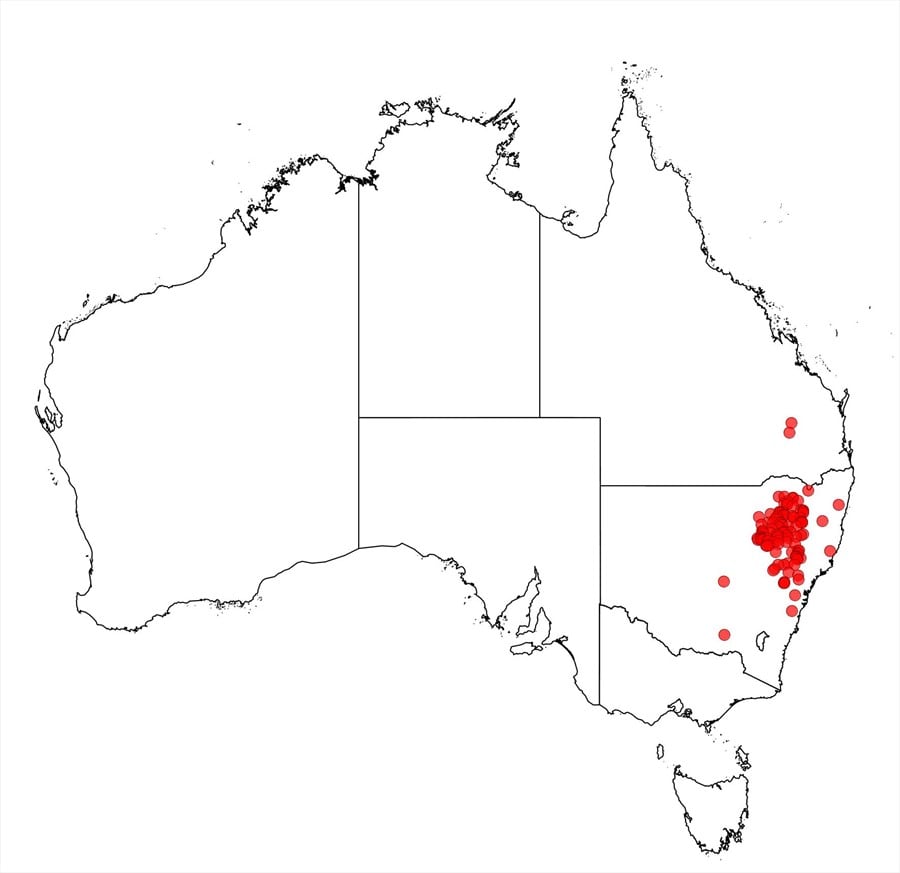Acacia cheelii Blakely
WATTLE
Acacias of Australia
Common Name
Motherumbah
Family
Fabaceae
Distribution
Occurs mainly on the north-western plains and north-western slopes of the Great Dividing Ra., N.S.W., and in the Hunter R. Valley.
Description
Tree to 10 m high, slender, glaucous. Bark ribbony or flaky, blackish to grey. Branchlets angular or flattened towards apex, red-brown or brown, glabrous, often pruinose. Phyllodes mostly very narrowly elliptic, mostly shallowly to markedly falcate, flat, 10–16 (–23) cm long, (6–) 10–18 (–32) mm wide, coriaceous, glabrous, with 3–6 ±prominent main nerves continuous to base; minor nerves (4–) 5–10 per mm, parallel, not anastomosing; gland inconspicuous, basal. Spikes 2–6.2 cm long, golden. Flowers 5-merous; calyx 0.4–0.8 mm long, dissected to 1/4; lower half villous; apex to halfway down with red-brown or black glandular hairs; corolla 1.5–2.1 mm long, dissected to 1/2, glabrous or with few hairs; ovary densely pubescent. Pods linear, slightly moniliform, mostly 5–11 cm long, ±woody to coriaceous, scurfy, hairy near base. Seeds longitudinal, oblong to narrowly oblong or elliptic, 3.7–6.7 mm long, brownish black; pleurogram often with dark halo; areole open.
Phenology
Flowers Aug.–late Oct.; fruits Nov. & Dec.
Habitat
Grows in eucalypt woodland and scrub, especially on rocky or stony hillsides and hilltops, usually in skeletal or sandy soils.
Specimens
N.S.W.: Nandewar Ra., Mt Kaputar Rd, B.G.Briggs (NSW53771); Barbers Pinnacle, Boggabri, R.H.Cambage 2470 (NSW); 98.2 km SW of Bingara on the Narrabri road, R.G.Coveny 12342 & J.Dalby (B, BRI, HO, K, MEL, MO, NY, PERTH, TL); near Mt Wheoh, Warrumbungle Natl Park, G.Harden 9 (NSW).
Notes
This species and the following comprise the ‘A. cheelii group’ of eastern Australia: A. binervia, A. blakei, A. bulgaensis, A. burrowii, A. georgensis, A. matthewii, A. spania, A. sparsiflora, A. striatifolia, A. tenuinervis and A. williamsiana. The group is distinguished by spikes arranged in short racemes, phyllodes with numerous, closely spaced, non-anastomosing longitudinal nerves, and linear pods slightly constricted between the seeds. Acacia julifera is related to this group but most readily distinguished by its normally simple (not racemose) inflorescences and smaller flowers. Acacia meiosperma was referred to the ‘A. cheelii group’ by NSW, Fl. Austral. 11B: 265 (2001), but it is now regarded as member of the ‘A. tumida group’.
FOA Reference
Data derived from Flora of Australia Volumes 11A (2001), 11B (2001) and 12 (1998), products of ABRS, ©Commonwealth of Australia
Author
Dr M.D.Tindale and Dr P.G.Kodela with the assistance of M.Bedward, S.J.Davies, C.Herscovitch, D.A.Keith and/or D.A.Morrison
Edited by B.R.Maslin
This identification key and fact sheets are available as a mobile application:
URL: https://apps.lucidcentral.org/wattle/
© Copyright 2018. All rights reserved.
